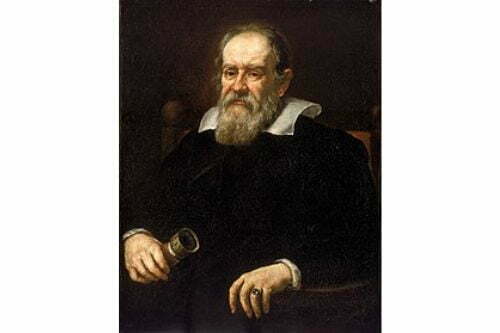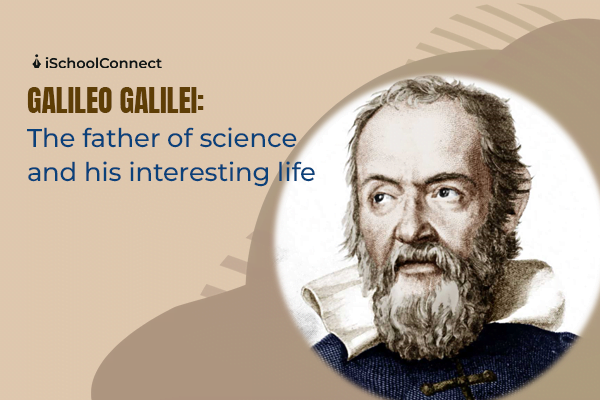Table of Contents
Introduction
Our fascination with superheroes and their ability to save the world is unparalleled in today’s times. It is captivating to watch them fight for the truth and let the world know what is right and wrong. We have one such superhero in the history of science. Galileo Galilei, known as the father of science, made notable contributions to the field! The extraordinary Galileo Galilei, the father of science, had a fixation on learning about the Milky Way, the Sun, the Moon, and other planets in the universe. Continue reading to find inspiration for studying sciences abroad!
Who is Galileo Galilei?
Now, known as the father of science, Galileo was studying medicine in his early years. He was from Italy and lived a major portion of his life in Florence.
During his scientific career, he taught at the Universities of Pisa and Padua and wrote twelve books. He made countless discoveries and tools, including the refracting telescope known as the Galilean telescope.
He focused on observing, experimenting, and using mathematics to gain a deeper understanding of natural laws.
Galileo learned of Nicolaus Copernicus’ (published in 1543) theory that the Earth and all other planets revolved around the sun. Galileo was completing his education at the University of Padua during that time.
Soon after, Galileo’s observations with the newly invented telescope convinced him that Copernicus’ sun-centered, or heliocentric theory was correct.
Galileo Galilei’s early life

The father of science, Galileo, spent his middle adolescence at the monastery school of Vallombrosa, near Florence, before enrolling in 1581 at the University of Pisa to study medicine.
Despite his father’s protests, he became fascinated with mathematics and decided to pursue a career in mathematics and philosophy.
Galileo then began preparing to teach Aristotelian philosophy and mathematics in Florence. Several of his lectures have been preserved since the time he started teaching.
What are the major contributions of Galileo Galilei?
The father of science has made the following significant contributions in the study of-
- Craters and mountains on the moon
- Phases of Venus
- Jupiter’s moons
- Stars of the Milky Way
- Galileo’s discovery of sunspots
Why Galileo Galilei was known as the father of science
His statement agrees with Nicolaus Copernicus’ theory that the earth revolves around the sun
Galileo began his career by teaching the acknowledged astronomical theory of the time, which stated that the sun, stars, and all planets revolved around the Earth.
Since the time of Ptolemy and Aristotle more than a millennium ago, this geocentric conception of the world had been accepted as gospel.
Craters and mountains on the moon
The Moon’s surface, contrary to popular belief, was rough, with mountains and craters whose shadows changed with the position of the sun. The father of science was able to estimate the height of the lunar mountains using the length of the shadows, demonstrating that they were similar to mountains on Earth.
The phases of Venus
The Moon has changing crescent phases, just like Venus. However, the explanation for Venus’s geometry can only be found in its orbit around the Sun, rather than the Earth. This questioned the notion that everything in the cosmos revolved around the Earth.
Jupiter’s four moons

Galileo discovered three of Jupiter’s four largest moons on January 7, 1610, using his refracting telescope, and the fourth large moon four nights later. The moons appeared and disappeared periodically due to their movement revolving around Jupiter, which he correctly derived as proof they were orbiting the planet. The existence of another planet with smaller bodies orbiting it shattered the geocentric model of the universe, which held that the Earth was the center of creation and that all other planets orbited it.
The stars of the Milky Way
Galileo was the first to demonstrate that the Milky Way was not an ambiguous mass, but rather gazillions of stars packed so densely that they resembled clouds.
Galileo’s discovery of sunspots
Galileo learned about telescopes in 1609 and began building & modifying one in 1610, allowing him to examine sunspots that were previously invisible to the naked eye.
Both Galileo and the English mathematician Thomas Harriot observed sunspots in late 1610, though their findings were unrelated.
Galileo continued his sunspot observations in April 1612 when Mark Welser, a banker and magistrate in Germany, wanted Galileo’s opinion on the subject of sunspots.
Sunspots were correctly identified as markings on the sun in his letters to Welser, which were published in 1613. This confirmed that the sun rotated monthly as the positions of the spots moved.
Repercussions Galileo faced due to his observations
Galileo’s assertion that the Earth revolves around the sun led to his prompt summons to Rome. Accusers claimed that he intentionally defied a papal order that prohibited the dissemination of Copernicus’ theory. In 1633, the Inquisition found Galileo guilty of the charge and sentenced him to life imprisonment after forcing him to withdraw his belief in the heliocentric theory publicly.
He was allowed to serve his sentence under house arrest at his villa outside Florence due to his advanced age. Galileo died on January 8, 1642, while he was under house arrest.
The importance of contributions made by the father of science

Galileo, the father of science, made relentless efforts to prove that the Earth revolves around the Sun and not vice versa. He strongly believed in the theories of Nicolaus Copernicus and studied hard to define those theories with his observations and work.
The teachings about the Milky Way, the phases of Venus, and the Moons of Jupiter we study in the school are a result of the findings by the father of science.
Galileo Galilei is commemorated by a lunar crater, a Mars crater, and the asteroid ‘697 Galilea’. The Galileo probe to Jupiter (launched in 1989) also honors him, as does the nickname ‘Galilean moons’ given to the four Jovian satellites he discovered!
Key takeaways
- Galileo agreed with Nicolaus Copernicus’ theory that the earth revolves around the sun
- Galileo discovered that the Milky Way was more than just a hazy band of light; it was made up of thousands of individual stars.
- ‘Galilean moons’ is the nickname given to the four Jovian satellites discovered by Galileo Galilei.
Did you enjoy this blog? If yes, please share your thoughts in the comments below. Click here to reach out to us for more information on the top 5 discoveries made by the father of science-Galileo Galilei. We would be happy to assist you with your queries!
Liked this blog? Read next: Natural Science | What you need to know
FAQs
Q1. Apart from being referred to as the father of science, what other name is Galileo Galilei known as?
Answer- Galilieo Galilei is also known as the father of modern astronomy.
Q2. Which scientist referred to Galileo as the father of modern science?
Answer- Albert Einstien often called Galileo the father of modern science.
Q3. Which is the first book published by Galileo?
Answer- In 1632, Galileo published his first scientific masterpiece, the ‘Dialogue Concerning the Two Chief World Systems’.






